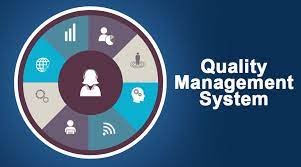Get a Custom Essay Paper that meets your expectations by clicking ORDER
Essence of Good Office Communication
Your next writing assignment will be a background review and synthesis of the literature for the topic of your research-based report.
This assignment is designed to help you prepare for the final paper in WRTG 394. Keep in mind that your final paper in WRTG 394 will be a report in which you do the following:
- define a problem in your workplace or community persuasively and accurately
- propose a solution or solutions to the problem or issue
Steps to Take in Completing this Assignment:
- Locate at least seven articles on your topic. At least four articles should come from scholarly journals or credible trade journals. You should use OneSearch through UMUC’s Library and Information Services or individual databases through the library for your research.
- Take notes, perhaps by applying the skills from your annotated bibliography exercise, on each article.
- Write a synthesis of the articles. The synthesis will be 1000-1400 words.
In your synthesis, you will group the themes of the articles. For example, if you have collected seven articles on the topic of paperless offices, you might find that three major themes emerge from your perusing of the seven articles:
o common reasons for resisting the move to a paperless office
o costs of transitioning to a paperless office
o benefits of transitioning to a paperless office
Essence of Good Office Communication
Examples of Topics and the Role of this Assignment:
You might write a report on any one of the following topics. Please note that these are examples of topics. You might not choose any of them. They are provided here to help illustrate this assignment.
- a report to your manager at work suggesting that more teleworking options be given to employees at your workplace
- a report to your supervisor at work suggesting that email be used less frequently for communication and that another application be used to improve communication.
- a report to your manager at work suggesting that your office become paperlessa report to the board of directors at your townhouse community to argue that the playground area in your community should be renovated
- a report to the manager of your unit at work noting that recycling facilities in the workplace should be improved
In any report of this nature, some background research is necessary. For example, consider the following strategies when collecting background research for the topics mentioned above:
- For a report to your manager at work suggesting that more teleworking options be given to employees at your workplace, some research studies on teleworking would be very persuasive.
- For a report to your supervisor at work suggesting that email be used less frequently for communication and that another application be used to improve communication, some scholarly literature or articles from credible trade journals on transitioning to alternative electronic communication would be beneficial. In addition, articles that demonstrate the problems with email communication would add to the argument.
- For a report to your manager at work suggesting that your office become paperless, some scholarly literature on paperless offices would be effective.
- For a report to the board of directors at your townhouse community to argue that the playground area in your community should be renovated, some scholarly articles or trade journal articles on the benefits of playground areas for communities, the benefits of exercise for young children, the effect of such playground areas on home values, etc. would be effective.
- For a report to the manager of your unit at work arguing that recycling facilities in the workplace should be improved, some scholarly articles or studies on the challenges of and benefits to implementing recycling facilities in organizations would be persuasive. Of course, there are varieties of recycling programs. The articles you find would help define what type of recycling program you would propose.
Essence of Good Office Communication
Length of your paper:
As noted above, your background review of the literature on your topic should be 1000-1400 words in length.
The sources should be cited throughout the paper in APA format and listed in a References page at the end of the paper in APA format.
You will find that your synthesis will be a helpful component of your final research-based report. In fact, if your synthesis is well written, you might be able to take whole parts of it and copy it into the final report. In any case, the skills and strategies you gain from writing the background review and synthesis of literature will be very valuable in writing your final research-based report.
Essence of Good Office Communication
Topics to Help You Come Up with Ideas on this Assignment:
Some possible workplace research topics are the following. These are examples to help you get started. Please contact your instructor to have other topic ideas approved.
- Going to a wireless network
- Going to a paperless office
- Switching from Windows to Linux (or other similar switch)
- Installing/upgrading company firewall
- Establishing a drug policy
- Establishing an employee leave donation program
- Establishing an equipment donation program for used computers, etc.
- Establishing a company recycling program (paper, etc.)
- Education/retraining for your employees
- Establishing a program for millennial workers (e.g., training on certain aspects of etiquette, on understanding other generations, etc.)
- Designing a training program for workplace safety issues
- Redesigning employee performance evaluations
- Developing a work-at-home (telecommuting) policy
- Developing a flex-time policy
- Establishing on-site day care or providing other child care benefits
- Providing gym membership or creating an on-site workout facility
- Creating or revising a charitable contribution policy
- Creating or improving a tuition assistance program
- Accommodations needed for employee/s with specific health issues (for example, migraines)
- Establishing a Habitat for Humanity (or other group) chapter at your organization
Essence of Good Office Communication
Some students have chosen topics outside of their workplaces, such as the following:
- Starting a neighborhood watch program
- Starting a mentor program at your place of worship
- Getting additional lighting in the neighborhood
- Changing traffic patterns around your child’s school
- Starting a PTA website for your child’s school
- Installing a tot lot in your neighborhood
- Constructing a crying baby room at your place of worship
- Offering ESL courses at your church
- Increasing participation in a military Family Support Group
- Introducing a youth sports program to a school or community
Essence of Good Office Communication
Below is a partial answer to the above homework questions by one of our writers. If you are interested in a custom non plagiarized top quality answer, click order now to place your order.
Essence of Good Office Communication
Introduction.
An organization is an entity that entails groups of individuals with some level of relationship due to possession of common goals and objectives. In an organization, top management team inclusive of the managers and the executive’s officers who spend most of their time communicating to their subordinates so as to achieve the organizations’ goals and desires (Berkenkotter et al. 2016). Communication involves the creation of understanding or meaning among individuals in a systematic and continuous process.
The success of organizations relies on the personal possession of the appropriate office communication skills, in particular by the top management team. In our organization, there is a challenge relating to the observance of good office communication during managerial tasks performance (Cornelissen et al. 2017). The paper will aim at showing the essence for observing real office communication in administrative tasks performance of organizations based on the perspectives of different researchers. The aspect of communications that are tackled in the paper with respect to office communications are; nature of communication, driving force, factors hindering and solutions in achieving success in office communications.
Nature of Communication
According to Holtzhausen et al. (2014), the nature of communication at the office deals with not only information exchange but interactions with people. The interactions at times cause barricades that present mistrust and confusion which translates to poor performance in an organization. Moreover, Ma et al (2013), agrees that the nature of communications is complex and problems are prone to occur.
The problem arises due to the inefficient observance of these communication techniques by the top management team during their communication with their subordinates. Contrariwise, Walden et al., (2017) posit that in order to resolve the problems. Proper communication acts as the initiator of improving organizations operation to a better state by possessing the appropriate skills relevant to the discussion.
Furthermore, communication at the place of work is ambiguous and pervasive. This ensures that there is a seamless flow of information that not only improves the performance of the organization but also relationships at the workplace (Ma et al, 2013). In addition, office communication is founded on the principle of togetherness that fosters a common sense of belonging among the members of organizations.
Thus, it reflects a congenial atmosphere that acts as the basis for a successful organization (Men, 2014). The researcher agrees with the views of Ma et al., (2013) that successful organizational management relies on effective office communication that establishes, maintains and dissolves cordial relationships within the group.
Additionally, Matos Marques Simoes and Esposito (2014), indicates that organization culture influences the values and beliefs of a group of people by their geographical location on the need to establish fruitful relationships among themselves and the society. There are various office communication techniques especially in written forms which act as the tool for performing managerial tasks regarding the nature of an organization.
Driving Force for the Establishment of Good Office Communication.
The need for establishing a positive correlation that caters for the well-being and especially for the support of the members during the performance of their duties and responsibilities acts as driving force for the proper use of office communication. It is not limited to the involvement of a certain number of individuals as it depends on the communicators’ ability to converse effectively and freely (Cornelissen et al. 2017). Members of an organization can achieve the establishment of good office communication by always building priority of communicating effectively and supporting each other.
The nature and quality of the communication content among the members of a particular group especially in an organizational setting dictate the stability of managerial duty performance. Managers engage in communication with their subordinates which later describes their relationship with their peers and which may positively or negatively influence the handling of various issues concerning managerial duties and responsibility (Walden et al., 2017). Therefore, the effectiveness of a communication process dictates achievement of real office interaction in an organization…..
Essence of Good Office Communication
Get a Custom Essay Paper that meets your expectations by clicking ORDER









